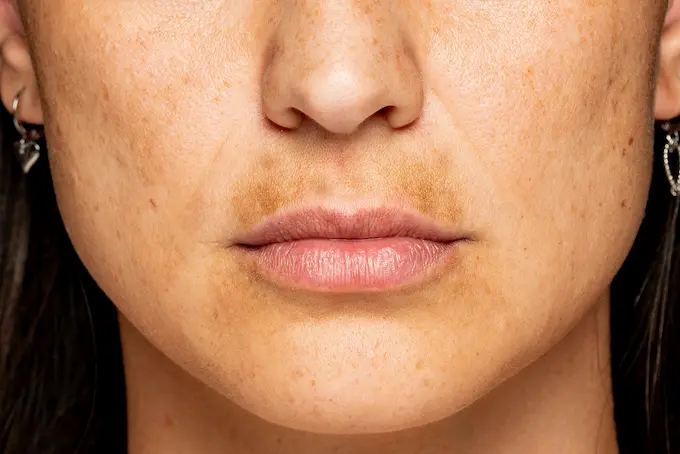
PROMO!
First order? Get 10% OFF with this code: 1storder

Achieving a sun kissed glow without spending hours in the sun has become easier with Melanotan peptides. Two popular options Melanotan 1 and Melanotan 2 are available, each designed to stimulate melanin production and enhance tanning. While both promote a deeper tan, they differ in their mechanisms, effects, and potential side effects.
These peptides are showing promising results in research for understanding how the body regulates skin color and other biological responses.
This article explores the key differences between Melanotan 1 vs 2, helping you make an informed decision about which peptide is more suitable for your research goals.
Explore Melanotan 1 from Peptide Works, a peptide that promotes gradual tanning with more uniform pigmentation effects.

Melanocortin receptors play a key role in how Melanotan 1 vs 2 behave in research studies. MT-1 shows strong selectivity for the MC1R receptor, which is mainly tied to pigmentation pathways. This narrow focus helps researchers study its role in skin tone regulation.
MT-2 interacts not only with MC1R but also MC3R and MC4R, which are linked to metabolism, appetite, and sexual function. PT-141, another related peptide, targets MC4R more strongly, and has been studied for effects on sexual health.
This receptor profile helps explain why these peptides show different outcomes when tested in laboratory settings. Given the receptor interactions, it becomes clear why pigmentation and systemic effects are influenced differently by MT-1 and MT-2. To understand how pigmentation is affected, it’s important to examine MC1R receptor activity

The MC1R receptor plays a central role in skin pigmentation research. When activated, it signals the production of melanin, the pigment that darkens skin tone. Melanotan 1 shows high selectivity for MC1R, making it useful for studying pigmentation pathways without strong effects on other systems.
Melanotan 2 also activates MC1R but interacts with other receptors as well, which may influence results beyond pigmentation. Because MC1R is tied so closely to melanin production, it remains a key focus in studies comparing Melanotan 1 vs 2.
Researchers often look at how changes in MC1R binding affect the depth and duration of pigmentation. This specificity of MT-1 versus the broader action of MT-2 sets the stage for understanding why their overall effects can differ significantly. MT-2’s broader receptor interactions explain why its effects extend beyond skin tone.
Melanotan 2 impacts more than pigmentation because it interacts with several melanocortin receptors, not only MC1R. Research shows that when MT-2 binds to MC3R, it can influence appetite control and energy regulation, making it a subject of interest in studies related to metabolism.
Its activity at MC4R has also been linked with sexual function, an area where PT-141 is more selective. These broader pathways explain why Melanotan 2 is often studied for outcomes that extend beyond skin tone. In contrast, Melanotan 1 remains focused on pigmentation due to its strong MC1R selectivity.
This receptor difference highlights why comparisons of Melanotan 1 vs 2 often emphasize their distinct roles in laboratory investigations. These receptor interactions naturally lead into considerations of safety and side effects.
Explore PT-141 from Peptide Works, a peptide derived from MT2 that targets MC4R pathways without triggering skin tanning.
Melanotan 1 vs 2 show different side effect patterns when compared. Melanotan 1 is mostly linked with mild skin darkening or temporary flushing, since it acts mainly on pigmentation pathways. Melanotan 2, on the other hand, interacts with more receptors and may trigger broader responses such as nausea, reduced appetite, or changes in sexual function.
Some studies have also reported headaches or short-term fatigue. These contrasts help explain why MT-1 is often studied for targeted pigmentation effects, while MT-2 is explored in areas beyond skin tone.
Understanding their unique safety profiles is key when evaluating the differences between Melanotan 1 vs 2. Knowing these differences in side effects helps contextualize their potency and overall outcomes.
Discover Melanotan 2 from Peptide Works, a peptide known for faster tanning outcomes and stronger receptor activity.

When comparing strength, Melanotan 2 is often seen as the more powerful option. Studies note that it produces visible effects at lower amounts, showing faster and deeper tanning changes than Melanotan 1. This is linked to its ability to act on more than one receptor, giving it a wider reach in the body.
Melanotan 1, while effective, usually works in a slower and more controlled way, with changes focused mainly on pigmentation. Because of these differences, MT-1 is preferred for steady results, while MT-2 is explored in cases where a stronger and quicker response is desired.
Feature Comparison
| Feature | Melanotan 1 | Melanotan 2 |
|---|---|---|
| Potency | Moderate | Higher |
| Onset of Effect | Slower | Faster |
| Main Focus | Pigmentation | Pigmentation + broader effects |
| Receptor Action | Primarily MC1R | MC1R, MC3R, MC4R |
This comparison illustrates the practical differences in application and expected outcomes between the two peptides.
The tanning effects of Melanotan 1 vs 2 differ not only in intensity but also in how long they remain visible. Melanotan 1 is known for creating gradual pigmentation that often lasts several weeks to a few months. Its strong selectivity for MC1R promotes stable melanin production, leading to a tan that fades slowly and maintains a more natural look.
Melanotan 2, in contrast, develops pigment more quickly and with greater intensity. While the tan can still last three weeks to two months or longer, it often requires continued sun or UV exposure to maintain peak results.
Because MT-2 acts on multiple receptors, its effects tend to appear faster but may not always persist as long without reinforcement. This understanding of duration is essential when selecting a peptide for research or specific study outcomes.
Melanotan 1 and Melanotan 2 are both melanocortin analogs, but they work in noticeably different ways. MT-1 mainly targets MC1R receptors, leading to slow, steady, and long-lasting changes in skin tone. MT-2, on the other hand, affects a broader range of receptors, producing quicker and more intense tanning, while also having effects on appetite, metabolism, and sexual function.
Side-effect trends mirror this split MT-1 reactions stay skin-focused, whereas MT-2 extends into systemic responses. Understanding each peptide’s receptor action, potency, and duration lets researchers pick the compound that fits their study goals.
Peptide Works supplies high-quality Melanotan 1 and Melanotan 2 for research use only, ensuring dependable access for labs worldwide.
[1] Sivyer GW. Changes of melanocytic lesions inducedby Melanotan injections and sun bed use ina teenage patient with FAMMM syndrome. Dermatol Pract Concept. 2012 Jul 31;2(3):203a10.
[2] Callaghan Iii DJ. A glimpse into the underground market of melanotan. Dermatol Online J. 2018 May 15;24(5):13030/qt2gz9f9jk.
[3] Mun Y, Kim W, Shin D. Melanocortin 1 Receptor (MC1R): Pharmacological and Therapeutic Aspects. Int J Mol Sci. 2023 Jul 29;24(15):12152.
[4] Legros C, Devavry S, Caignard S, Tessier C, Delagrange P, Ouvry C, Boutin JA, Nosjean O. Melatonin MT₁ and MT₂ receptors display different molecular pharmacologies only in the G-protein coupled state. Br J Pharmacol. 2014 Jan;171(1):186-201.
ALL CONTENT AND PRODUCT INFORMATION AVAILABLE ON THIS WEBSITE IS FOR EDUCATIONAL PURPOSES ONLY.
DISCLAIMER: These products are intended solely as a research chemical only. This classification allows for their use only for research development and laboratory studies. The information available on our Peptide Works website: https://peptide-works.com/ is provided for educational purposes only. These products are not for human or animal use or consumption in any manner. Handling of these products should be limited to suitably qualified professionals. They are not to be classified as a drug, food, cosmetic, or medicinal product and must not be mislabelled or used as such.
Peptide Works
Related Articles

Could Orexin A peptide Treat Daytime Fatigue?
Waking up tired frustrates many people. Dragging through a full day with heavy eyes and slow focus makes work and

How can the Adamax Peptide help Chronic Inflammation?
Chronic inflammation acts like a fire that never stops burning. It slows recovery, drains energy, and blocks proper tissue repair.

Can Vitamin B12 Immune System Support Enhance the Effects of Thymosin Alpha-1?
The Vitamin B12 immune system link is important because this vitamin plays a crucial role in DNA synthesis, methylation, energy